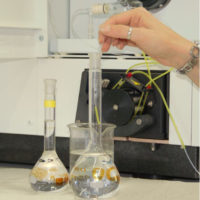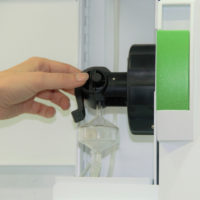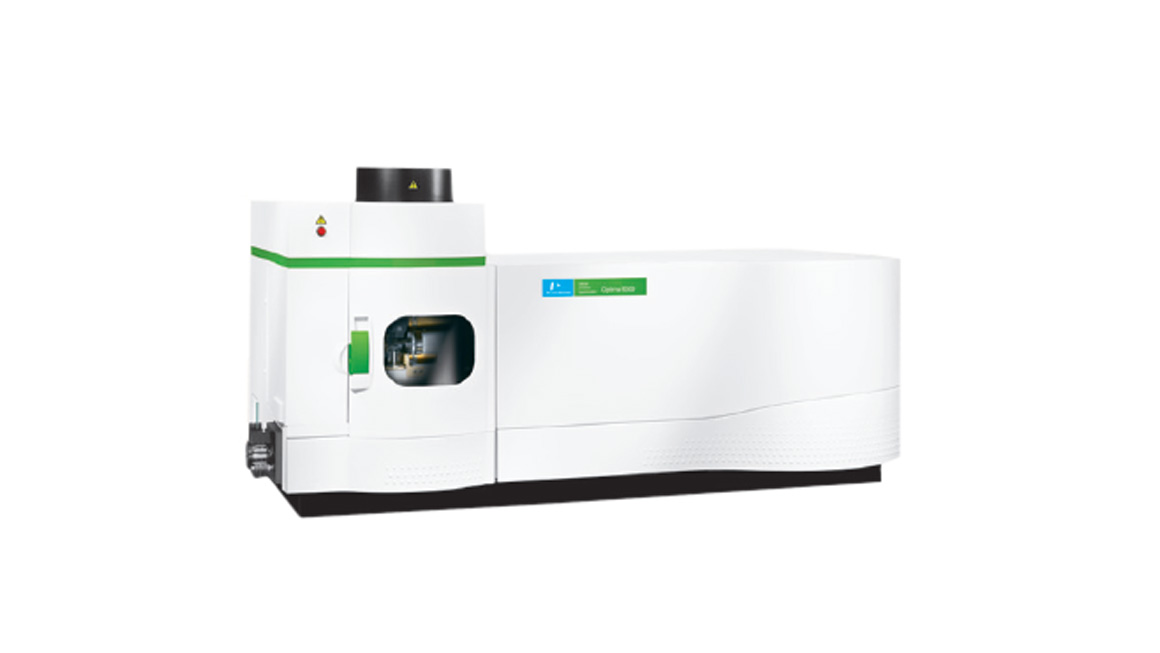OUR LABORATORY IS EQUIPPED WITH VARIOUS EQUIPMENT AND CAN MEET VARIOUS REQUIREMENTS OF CHEMICAL ANALYSIS AND METALLOGRAPHIC ANALYSIS.
FOR THE SELECTED INSTRUMENT, WE ILLUSTRATE THE FEATURES IN DETAIL, THE OPERABLE FUNCTIONALITY AND ANALYSIS, IN COLLABORATION WITH Tecnologie Superficiali Srl
ICP (PLASMA EMISSION SPECTROMETRY)
What is an ICP and what does it do?
The ICP (Inductively Coupled Plasma) is an analytical technique that allows us to make both qualitative and quantitative analysis in order to identify the chemical composition of a liquid sample, of its water soluble fraction or following its solid / liquid conversion.
Our chemical laboratory is equipped with a Perkin Elmer Optima 8000 ICP.
What can we analyse and identify at Metalcoating?
- Qualitative and quantitative analysis
- Analysis of the chemical composition of a sample in the liquid state
- Identification of the elements present
- Identification of the trace elements in water samples and galvanic tanks
- Analysis of release of metal ions in the water
- Quality control and purity of liquids and solutions
- Identification of pollutants in liquids and solutions



What are the characteristics that an analysis sample should have?
The sample must be liquid, aqueous phase, preferably without the presence of particulates.
Principle of operation
The ICP is based on the use of a plasma obtained by triggering the formation of ions in a stream of argon through an electrical discharge and accelerating the latter with an oscillating magnetic field generated by an induction coil radio frequency. The continuous input of energy from the coil allows us to reach very high operating temperatures (6000-7000 K) in the excitation-viewing area.
The calibration of the instrument is carried out using synthetic or natural standards.
The sample, after being solubilised, is introduced into the atomiser through a peristaltic pump. The Argon flow serves as a carrier and carries the aerosol inside the torch and the plasma.
The emitted radiation is focused on a monochromator which sends it to the photomultiplier and the signal is processed by a computer.
What is the nebulisation room?
The nebulisation chamber, constituted by corrosion-resistant material, serves to convey the aerosol into the torch, eliminating the coarser droplets. The sample, introduced into the plasma in the form of an aerosol, undergoes the evaporation of the liquid phase first, which is followed by the vaporization and the atomization of the elements.
Our ICP is equipped with Meinhard sprayers and both come under the pneumatic nebulizers category.
What are pneumatic nebulizers?
The pneumatic nebulizers we have available have a flow rate equal to about 1 ml/min, against the 10 ml/min of the devices used for the atomic absorption and for those which use flames.
- The axial flow or Meinhard nebulizer, derives from the nebulizers for atomic absorption, but is smaller to decrease the pressure and reduce the speed of the aerosol. It is made of glass and is therefore fragile and can be corroded by hydrofluoric acid.
- cross flow nebulizer or transverse nebulizer or Venturi effect, has the direct Argon flow directly perpendicular to the tip of the sample aspiration tube. It is less efficient than the previous one, but is more robust and clogs up less.
What is the plasma torch?
The plasma torch, with a diameter of 2 cm, is made up of two concentric quartz tubes. The final end of this device is placed in a magnetic induction coil fed by electric current high-frequency radio. The nebulized sample is entered into the central capillary of the quartz tubes, while in the outer tube Argon cools the lower part of the torch before it enters the plasma.
The coil, traversed by an alternating current at high frequency, produces an oscillating magnetic field that generates (via an electrical discharge) and maintains the plasma.
We can distinguish three different temperature zones in the plasma:
- hollow zone, in which the sample arrives at (6000-8000 K)
- concentrated plasma zone (around 10000K)
- excitation-observation zone (6000-6500 K)
What is the monochromator?
The radiation emitted from the plasma excitation-observation zone is taken by a lens and focused on the entrance slit of the monochromator, in fact, the collected signals are sent to the monochromator systems which allows you to make the electromagnetic radiation as monochromatic as possible before sending it to the detector.
The monochromator in the ICP spectrometer uses a plane reflection reticulum as a dispersing element, which allows for the sequential analysis of different elements.
The detection system usually sees photomultiplier associated with two dispersant systems: a prism and a reticulum. The prism separates the radiation along an axis of the plane of the detector and focuses on the reticulum that disperses along an axis which is orthogonal to the first.
The resulting spectrum is focused onto a detector: when an emission line strikes an area of the detector, the electric charges accumulate and can be recorded by a signal processing system.
The signal processing system and the presentation of the data is computerised, as well as the management of the various operating phases. This affords us considerable advantages such as the ability to choose the analytical lines, operate the background noise corrections, control numerous parameters (such as integration time, argon flows, the radio frequency generator, feeding the nebulizer, ignition of the plasma, …), store and display more calibration curves for different analyses, store analytical methods and emission spectra, calculate statistical parameters, the regression of the calibration curve parameters, detection limits, signal / noise ratio.



